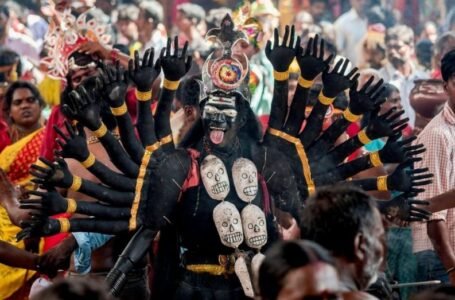The Katas Raj Temples – A Timeless Odyssey of Faith and History
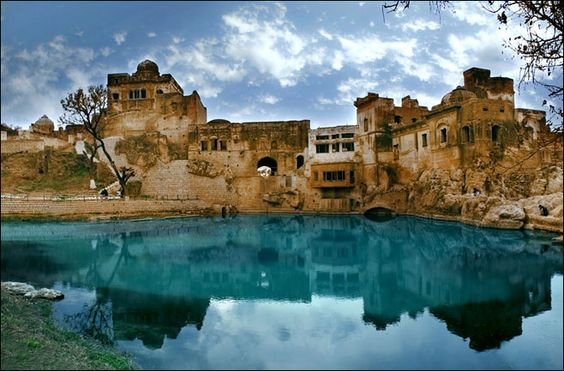
The Katas Raj Temples, also known as Qila Katas, form a complex of several Hindu temples intricately connected by walkways. Nestled in the Potohar Plateau region, these temples encircle a sacred pond named Katas. Here, the echoes of centuries blend with the rustle of leaves, inviting pilgrims and wanderers alike.
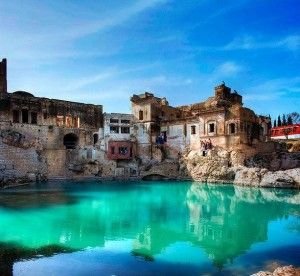
The temples’ origins stretch back to prehistoric times, but their architectural splendour began to flourish around the 7th century CE. These temples are attributed to the Hindu Shahi dynasties, a period when the region thrived with artistic and spiritual fervor.The pond at Katas Raj is said to have been created from the teardrops of Lord Shiva himself. After the death of his beloved wife, Sati, Shiva wandered inconsolable across the Earth. His tears formed the sacred waters that now cradle the temples. The temples primarily honour Lord Shiva, the destroyer and transformer in Hindu mythology. Devotees gather here to seek blessings, perform rituals, and immerse themselves in devotion.
The temples play a role in the Hindu epic poem, Mahabharata. According to tradition, the Pandava brothers spent a significant portion of their exile here, seeking solace and divine guidance. Legend whispers that the Pandavas engaged in a riddle contest with the Yakshas (celestial beings) at Katas Raj. Their intellectual prowess and humility were tested, and the temple grounds witnessed this cosmic exchange.
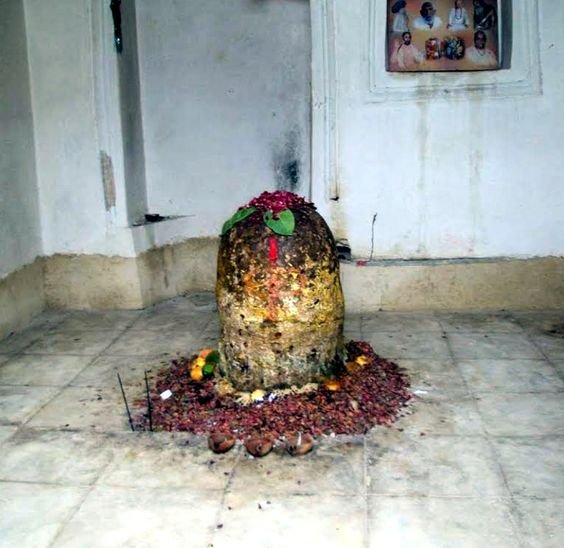
The Katas Raj complex comprises 12 temples (originally seven), each connected by walkways. These temples are nestled within natural caves, their walls adorned with intricate carvings and inscriptions. The Katas pond occupies an area of two Kanals and 15 marlas, with a maximum depth of 20 feet. Pilgrims believe that bathing in its waters purifies the soul and brings divine favour. Hari Singh Nalwa Fort and Haveli: The nearby Hari Singh Nalwa Fort and Haveli add historical layers to the site. They stand as silent witnesses to the ebb and flow of empires and faith.
The temples served as a backdrop for the Pakistani film “Serial Kanpur Se Katas Tak”, starring Saba Qamar. Their ancient stones witnessed modern storytelling. In recent years, the Pakistani government initiated restoration works at the temples. These efforts aim to preserve the architectural heritage and maintain the sacred ambiance. It reflects the rich history and cultural influences that have shaped this sacred site. Let’s delve into the architectural features.
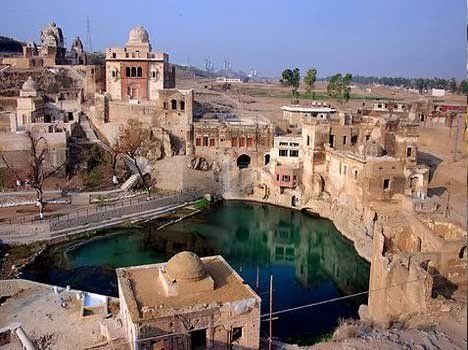
The temples at Katas Raj display characteristics typical of Kashmiri Hindu temples. These features include intricate carvings, decorative artwork, and a harmonious blend of form and function. The temples are primarily constructed from sandstone, a material that withstands the test of time. Their walls bear intricate carvings, sculptures, and decorative motifs, showcasing the craftsmanship of ancient artisans. The Katas site houses the Satyagraha, a group of seven ancient temples. These temples are interconnected by walkways, creating a spiritual labyrinth for pilgrims.
The Ramachandra Temple within the complex boasts a stunning ceiling adorned with decorative artwork. Intricate patterns, floral motifs, and geometric designs create an ethereal ambiance. The temples encircle the sacred pond known as Shri Ram Chandra Kund. Pilgrims believe that bathing in these waters brings spiritual purification and healing. Dedicated to Lord Rama, this temple features intricate carvings and decorative artwork. Its ceiling bears floral motifs and geometric designs, creating an ethereal ambiance. This temple honours Lord Hanuman, the devoted monkey god. Pilgrims visit here seeking strength, courage, and protection. Other Medieval Temples. The complex houses five other mediaeval temples. Each temple has its unique architectural features and spiritual significance. Havelis and Samadhis. Scattered around the complex, you’ll find havelis (traditional mansions) and samadhis (memorial shrines). These structures add historical layers to Katas Raj, reflecting the ebb and flow of empires and faith. The nearby Hari Singh Nalwa Fort and Haveli add historical layers to Katas Raj. These structures stand as silent witnesses to the ebb and flow of empires and faith.
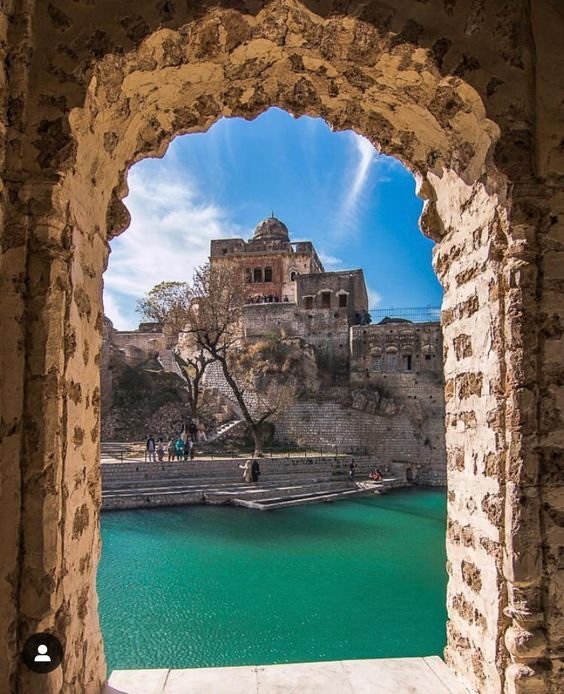
In recent years, the Pakistani government initiated restoration works at the temples. These efforts aim to preserve the architectural heritage and maintain the sacred ambiance for generations to come. The temples are primarily constructed from sandstone, known for its durability. Their walls bear intricate carvings, sculptures, and decorative motifs, showcasing the craftsmanship of ancient artisans.
Pilgrims visit the Satyagraha complex to seek blessings, perform rituals, and immerse themselves in devotion. The interconnected temples symbolise the unity of faith and this temple is dedicated to Lord Rama, one of the revered incarnations of Lord Vishnu. Its ceiling is adorned with intricate artwork, showcasing floral motifs and geometric designs. Devotees gather here to seek blessings and immerse themselves in devotion. The Hanuman Temple honours Lord Hanuman, the devoted monkey god. Pilgrims visit this temple to seek strength, courage, and protection. The Shiva Temple is the central focus of the complex. Devotees perform rituals, light lamps, and offer prayers to Lord Shiva here.
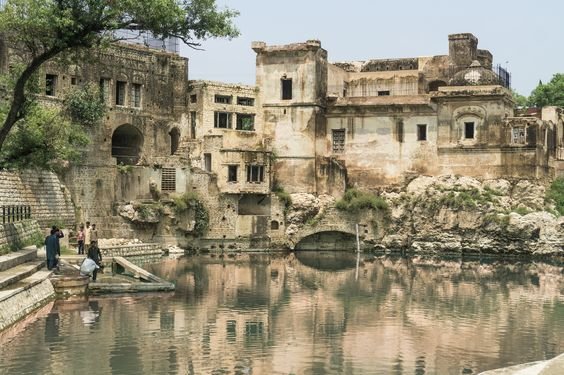
The Shiva lingam is a sacred symbol representing Lord Shiva, It is a cylindrical or elliptical stone, often placed on a pedestal. Devotees offer prayers, flowers, and milk to the lingam as part of their religious rituals. The main temple within the Katas Raj complex features a grand entrance and a large courtyard. Inside this temple, you can find the sacred Shiva lingam. Pilgrims gather here to seek blessings and connect with the divine presence.
The Katas Raj Temples primarily honour Lord Shiva, one of the three primary Hindu Gods. However, let’s explore the deities associated with this sacred site. The temples are dedicated to Lord Shiva, the destroyer and transformer in Hindu mythology. Devotees gather here to seek blessings, perform rituals, and immerse themselves in devotion, another tradition states that the Hindu deity Krishna laid the foundation of the temple and established a hand-made Shiva lingam within it. Lord Krishna’s divine act sanctified the site and connected it to the cosmic order, the main temple showcases an architectural style reminiscent of Kashmiri Hindu temples.
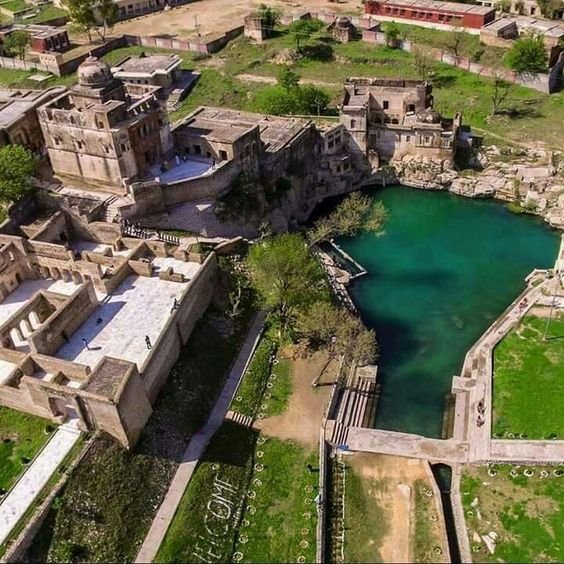
It combines elements from Hindu, Buddhist, and Mughal traditions. The temples are primarily constructed from sandstone, known for its durability and intricate carvings. The walls feature detailed sculptures, decorative motifs, and fluted pillars. Dentils, trefoil arches, and pointed rooflines adorn the temples. The Shiva temple, in particular, stands on a square platform with a recessed round arch entrance and faint cusps. The complex surrounds the sacred pond known as Shri Ram Chandra Kund.


